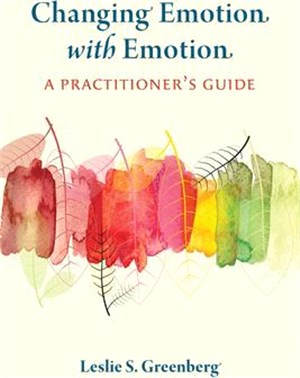 資料來源:
三民書局
資料來源:
三民書局
Changing emotion with emotion : a practitioner's guide
- 作者: Greenberg, Leslie S., author.
- 出版: Washington, DC : American Psychological Association
- 主題: Emotions. , Psychotherapy. , Emotions. , Psychotherapy.
- ISBN: 9781433834691 (pbk.): US49.99 、 1433834693 (pbk.)
- 資料類型: 圖書
- 內容註: Includes bibliographical references and index.
- 摘要註: "This book presents principles and methods for working with emotion in psychotherapy to address the core maladaptive processes that cause anxiety, depression, and other common mental health disorders. Mental health providers confront emotional suffering every day, yet working with emotion is rarely explicitly taught in most clinical graduate programs. There is evidence that emotional experience in therapy relates to therapy outcome, across multiple diagnoses. This research has given rise to strategies that address the core maladaptive processes that cause distress and dysfunction, rather than specific diagnoses. Methods described in this book can help clients with all types of disorders to "arrive at," or fully experience, their painful maladaptive emotions, and then "leave" these emotions by accessing new, adaptive emotions. These methods include helping clients sit with painful feelings, access bodily felt experience, identify unmet needs, and articulate the meaning of an emotion. Excerpts from moment-to-moment clinical dialogues help demonstrate techniques such as memory reconsolidation, providing corrective emotional experiences, chair work, and imaginal re-entry to past situations"--
-
讀者標籤:
- 系統號: 005495379 | 機讀編目格式
館藏資訊

This book presents principles and methods for working with emotion in psychotherapy to address the core maladaptive processes that cause anxiety, depression, and other common mental health disorders. Mental health providers confront emotional suffering every day, yet working with emotion is rarely explicitly taught in most clinical graduate programs. There is evidence that emotional experience in therapy relates to therapy outcome, across multiple diagnoses. This research has given rise to strategies that address the core maladaptive processes that cause distress and dysfunction, rather than specific diagnoses. Methods described in this book can help clients with all types of disorders to "arrive at," or fully experience, their painful maladaptive emotions, and then "leave" these emotions by accessing new, adaptive emotions. These methods include helping clients sit with painful feelings, access bodily felt experience, identify unmet needs, and articulate the meaning of an emotion. Excerpts from moment-to-moment clinical dialogues help demonstrate techniques such as memory reconsolidation, providing corrective emotional experiences, chair work, and imaginal re-entry to past situations.